Just about anything is possible in Guatemala. This slumbering giant of travel opportunities has woken up and, other than the public transport, is gradually gearing itself towards tourism – especially for the indie traveler. It´s not just that this fascinating and inventive country offers visitors activities you won´t find in other countries around the world, but the Guatemalans have thought up creative ways of doing the same old things in a different and engaging way. Add to that a rich culture handed down from the ancient Maya, stunning mountain scenery, and an exotic coastline, Guatemala quite simply delivers exhilarating adventures and exciting opportunities like nowhere else.
Explore tropical beaches
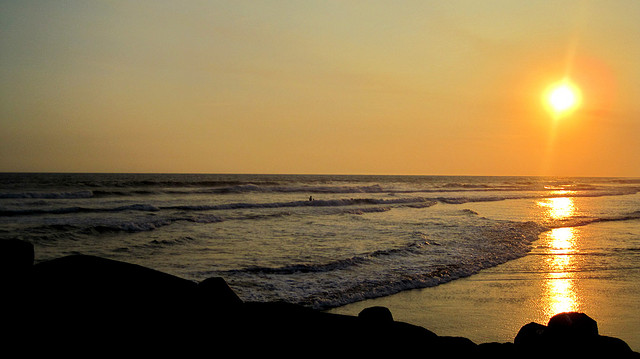
Beaches in Guatemala are covered with black-lace volcanic sand, and although surrounded by tropical scenery, are perhaps not as appealing to beach lovers as the lush white sands you find in other countries along the Pacific coastline. That is with the exception of Playa Blanca and Punta de Palma, two exotic and remote “secret” beaches not many people know about. Either beach can be reached from funky Livingston, but the most exciting thing about a visit to these beaches is they can only be reached by boat – from Puerto Barrios or even better, winding through the jungle down the Rio Dulce. To round off an amazing beach adventure, take a tent and spend the night under the stars.
[social]
Not all beaches in Guatemala are designed for simply relaxing in the sun and cooling off in the water. Hawaii Beach, for example, is a nature reserve and has the oldest sea turtle hatchery in the country. While the reserve strives to maintain the natural beauty of this pristine location, they also aim to invite tourists to learn about the local culture and how to respect the environment. You even get the opportunity to release freshly hatched turtles into the ocean.
Guatemala also has some of the best big game fishing off the west coast of Central America and is more affordable than many other countries. Puerto San Jose is regarded as one of the best locations in the world for sailfishing and Marlin – and the beach itself is not that bad either!
Check out the following beach articles:
- How to Tell Which Virgin Island is Right for You
- Endless Summer: Chasing Beach Season Around the World
- Ten Best Beaches in Europe You’ve Probably Never Heard Of
Fly to Tikal in a helicopter
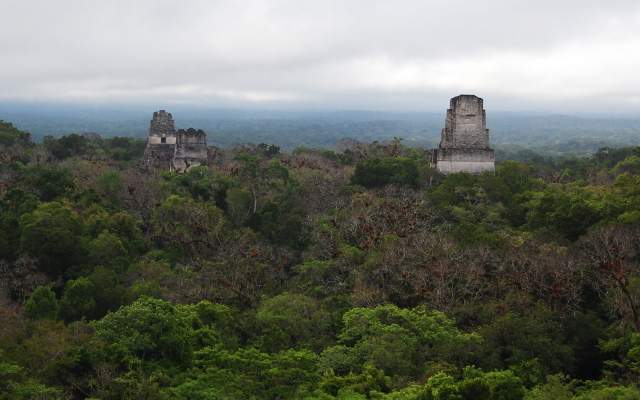
Of all the ancient sites in Latin America, Tikal ranks as one of the best. Chichen Itza and Machu Picchu may have taken the accolades as Wonders of the New World, but Tikal is easily, if not more so, as impressive. Set in a maze of dense jungle, the tips of massive temples can be seen poking up over the trees. Because of the profound astronomical knowledge of the ancient Maya and their amazing ability to construct such impressive structures, during the solstices and equinoxes the sun shines directly on to the crests of several temples and makes them glow a golden-orange colour – which is perhaps where the mythical City of Gold originates from.
Tikal is a 1.5-2-hour drive from Flores, and because there is only one road in and out, the options for getting there are quite limited. Unless you hire a car, your only option is to go with a tour operator or buy a ticket on one of their buses, though prices are affordable (and tickets can be bought at most hostels/hotels). The best time to leave is at 5am in order to avoid the crowds of tourists and the intense humidity, both of which start to kick in around midday. For a top-class experience, go by helicopter and get the aerial view you see in the film, Star Wars IV: A New Hope – although you will see this by climbing up to the top of Temple IV anyway. Most tour operators in Flores have space in their choppers for up to 8 people and charge around US $250 for rental, so if you can get enough people and cash together, this option beats another boring bus ride hands down!
Read the following articles about visiting ruins around the world:
- 6 of the Least Visited Ruins in the World
- 10 Best Roman Ruins Outside Rome
- A Guide to Visiting Maya Ruins in Central America
Cave diving in Semuc Champey
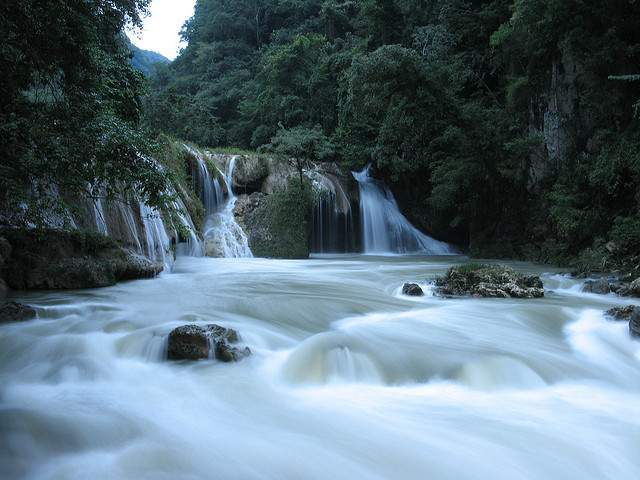
In an entire year of traveling around Latin America, Semuc Champey was my best experience. Natural beauty, excitement, adventure, and great people, this former Maya baths and play caves has it all. To explore the K´an- Ba caves you need a guide. They are not expensive but well worth splashing out for, literally splashing out. The caves are dark, rocky, and filled with water. You get given a candle to see even though in some parts the water is so deep you have to swim. You might want to take a head torch, but that´s not as much fun. Climb up rocks on rope and wooden ladders, look out for bats, walk under a waterfall, and jump off a rock into a deep pool (if you want to!) Great fun!
After the caves hit the rapids down the raging Cahabon River in a rubber ring, then climb the 20-min hike up a hill to break for lunch and admire the stunning views looking out over sapphire-blue bathing pools and crystalline waterfalls. That´s where you will be swimming in the afternoon, together with slithering on your backside down the naturally formed waterslides. To get to Semuc Champey, make your way to the quiet village of Languin. Hostel options are limited, though the peaceful and scenic El Retiro is well worth a visit. Hostels closer to the caves are El Portal and Hospadje las Maria, and although room prices are a little more expensive, you get a 20Q ($2.50) discount to go into the caves.
Find an adventure trip in Guatemala and book a hostel in Guatemala
Trekking in Lake Atitlan
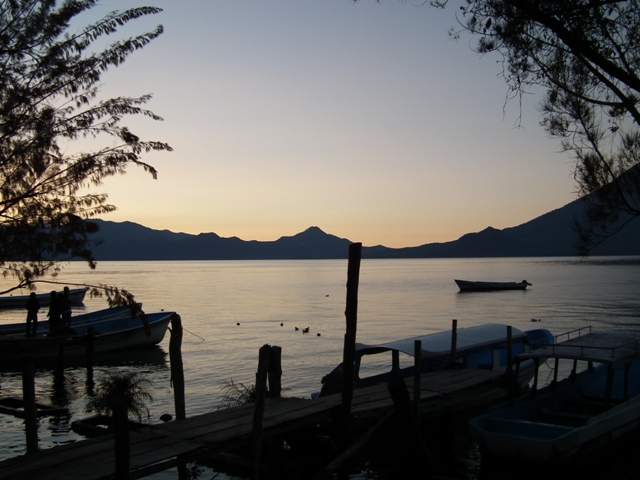
The spectacular scenery in the volcanic region around Lake Atitlan makes it perfect for trekking – and there are plenty of options, many of which you can do on your own without a guide. Ask at your hostel. One of the toughest, albeit most interesting is a 4km trek up the dormant Marylinda volcano on Santa Cruz, 9900 feet (3020 meters) above sea level.
The trek up Marylinda compares with the most popular trek around Lake Atitlan, which is up San Pedro volcano, but the differences between the two is that you come straight back down San Pedro and the views are cut off by heavy vegetation. Marylinda offers stunning views and opens out onto a plateau allowing you to explore the Maya farmland on the way to the local village, where you can meet a Maya family and check out the market. The guides at Atitlan Tours are also very knowledgeable about the landscape, nature, and Maya history, so it is also an interesting cultural learning experience.
Read The Lazy Trekker’s Guide to Trekking and 10 Best Hiking Trails in the World
Climb a volcano
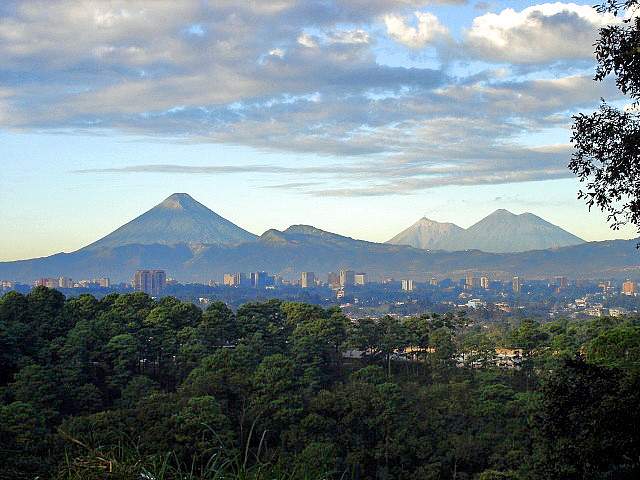
There are 37 volcanoes in Guatemala, five of which are still active. Albeit a little more dangerous, the active volcanoes are the more exciting to climb for obvious reasons, especially when you reach the summit and feel the heat of fierce lava bubbling below your feet. Pacaya, 20 miles (30 km) outside of Guatemala City, is the country´s most active volcano and gives you some great shots of flowing lava.
A more gruelling climb is Volcano de Agua, which is considered the most dangerous volcano in Central America due to the fact it has never erupted in recorded history. The 5-hour hike is rewarded with stunning views of Antigua, which is also home to another of Guatemala´s active volcanoes, Fuego, a 3,763m (12,343 ft) monster which last erupted in 1974. An easier option from Antigua is Fuego´s dormant twin, Acatenango.
Lake Atitlan is also a cool place to climb volcanoes, the most popular of which is San Pedro, purely because it has an already-routed tourist trail. Experienced climbers will prefer Mount Atitlan, which rewards its conquerors with spectacular views of Lake Atitlan and also the Pacific Coast. It´s an 8-hour climb; however, so be prepared to camp overnight and only go with an experienced guide.
Read the following articles about climbing, exploring, and hiking volcanoes:
- Top 5 Destinations for Volcano Enthusiasts
- 12 of the Most Active Volcanoes in the World
- 11 Famous Volcanoes in the Americas That You Can Climb
Volunteering in Quetzaltenango
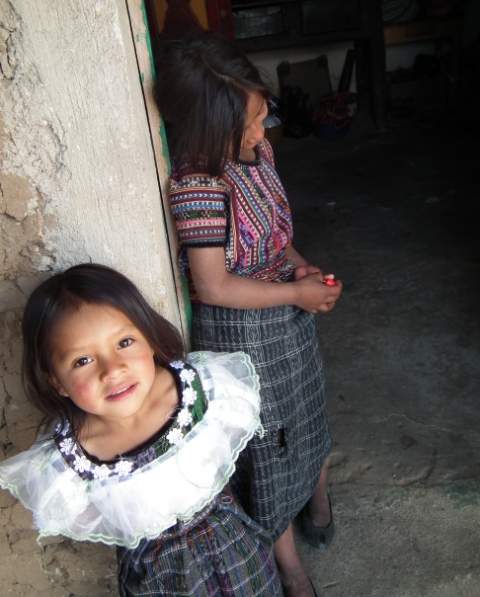
Helping children from impoverished families in the picturesque village of Quetzaltenango is one of the most rewarding experiences a traveler can have in Guatemala. There are several non-profit organizations in the area tackling social projects with the local K´iche Maya people, who are proud to cling to what is left of their crushed indigenous heritage.
Volunteers can help in various ways, although teaching math to village children, building websites, medical assistance, and looking after the mentally impaired are most appreciated. Volunteers must meet their own costs and be prepared to commit to at least three months, but in return you experience what life is like in a close-knit Maya village, and if you need to, learn Spanish or try your hand at the ancient art of weaving and other indigenous traditions.
Check out these articles and resources about volunteering while traveling:
- How to Get Started With Voluntourism
- Is It Worth It? An Insider’s Thoughts on Voluntourism in Orphanages and Schools
- From Tourist to Agent of Change: What You Need to Know About Voluntourism

Photo credits: Fidelio, Adam Seper, Summon Baka, Sir James, all others courtesy of the author and may not be used without permission.